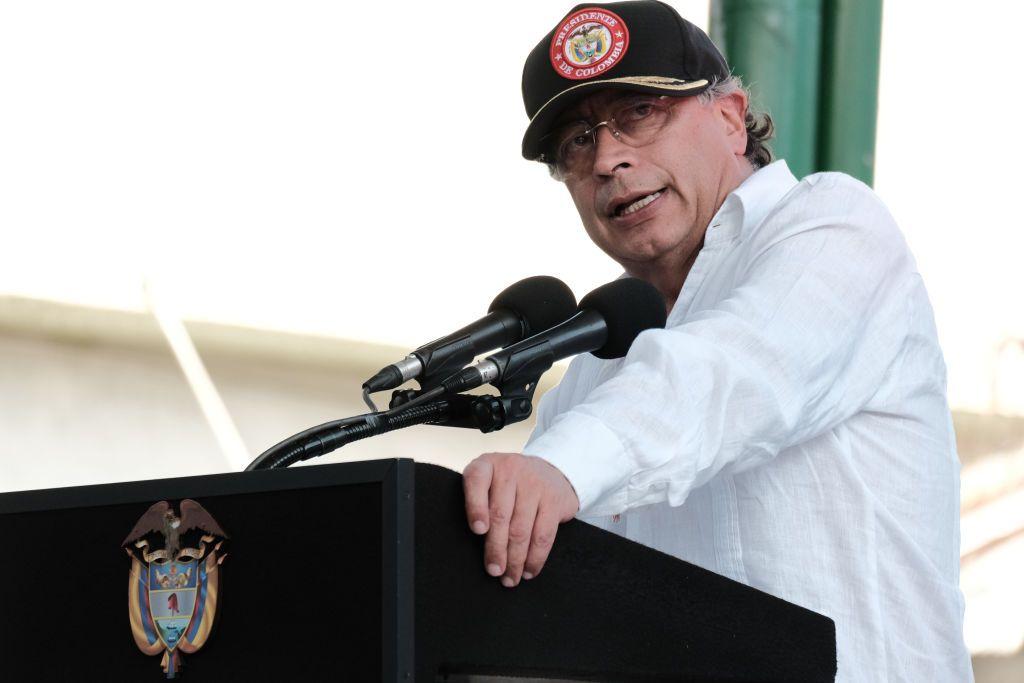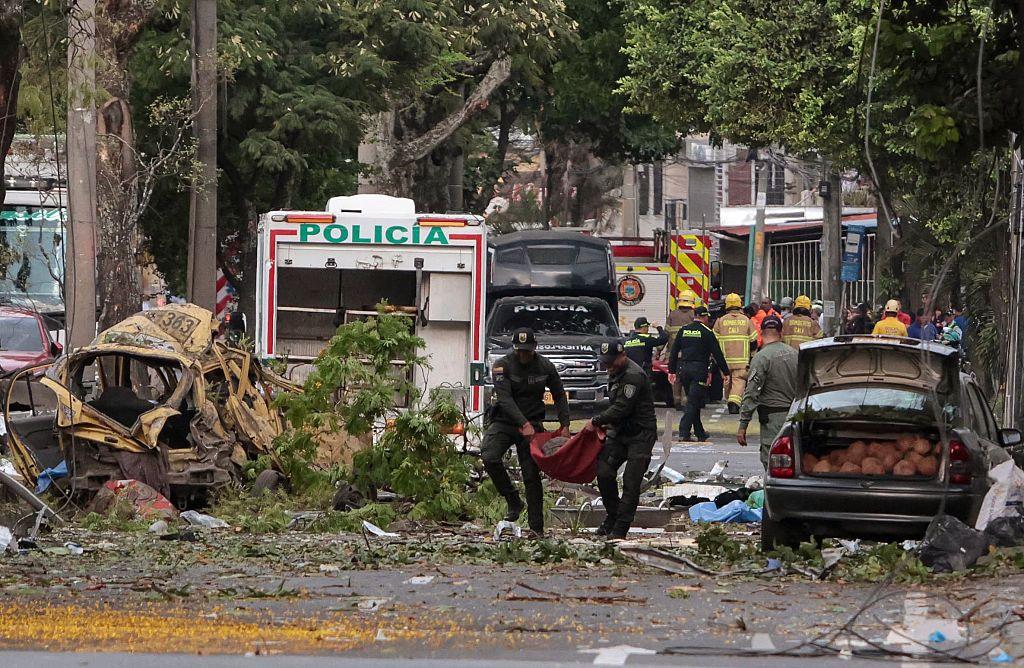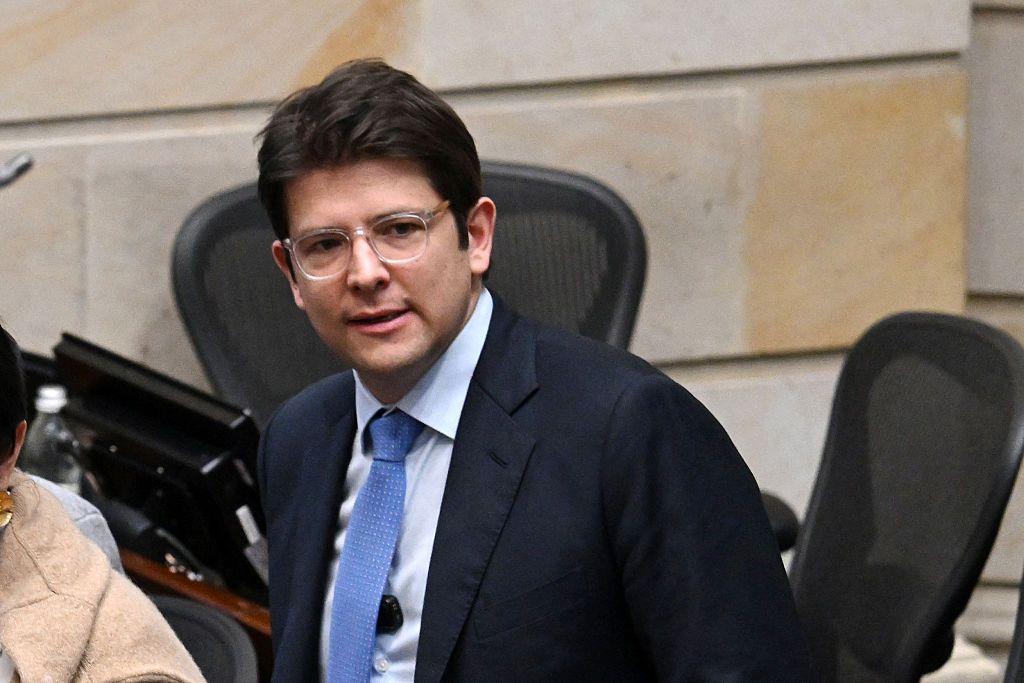Colombia lives moments of shock after two serious attacks attributed to dissidents of the FARC (Colombia Revolutionary Armed Forces): an attack with explosives against a military base in Cali, Valle del Cauca, and the demolition of a helicopter in the municipality of Amalfi, in the northeast of the department of Antioquia, occurred on Thursday, August 22.
The events in Cali were qualified by the local press as the “worst terrorist attacks” since 2019, when the guerrillas Eln starred in a car bomb attack against the Santander General Police School, in southern Bogotá, leaving 21 dead.
At least 19 people died and 65 were injured in total so far in the events of Cali and Amalfi.
President Gustavo Petro described what happened as “one day of death.”
The same president and his defense minister responsible for the events in Cali and Amalfi two different factions from the dissidents of the extinct Farc.
The explosion in Cali awarded it to members of the central General Staff, the dissent directed by alias Iván Bite, while the demolition of the helicopter in Antioquia related it to the 36th front of the dissent directed by Alias Calarcá.
Blighteenth and Calarcá used to direct the same armed structure, self -denominated central General Staff (EMC), but this was scanned in April 2024, and the faction directed by Calarcá was renamed as the General Staff of blocks and fronts.
No armed group has attributed the authorship of the attacks.
Since 2016, various Disidences from the FARC emerged after the peace agreement between government and most of this guerrillas.
Since then, the dissidents have suffered splits, generating a scenario of simultaneous conflicts in which several fragmented armed groups converge.
Earlier this month, Colombia buried the conservative presidential candidate Miguel Uribe, 39, who was shot during a campaign act in Bogotá, the capital.
The last attacks increase the pressure on the Petro government.
His opponents point out that the councilor’s conciliatory position towards the armed groups is related to this rebound of violence that, although it does not reach the levels of past decades, concerns increasingly in the country.
What happened in Cali?
The explosive attack in Cali, a city of 2.2 million inhabitants, was made with pump cylinders loaded in a truck, according to several authorities.
These indicate that the objective of the Marco Fidel Suárez air base, in the north of the city.
Witnesses on the field told the AFP news agency that they heard explosions near the base, that there were many people injured and that several homes were damaged.
The Colombian Prosecutor’s Office said Saturday that the trucks were transferred with mortar grenades and cylinders charged with explosive material based on ammonium and aluminum nitrate from rural area of Corinth, in Cauca, to the city of Cali.
Then, these artifacts were activated “through a slow wick mechanism.”

The explosion, which claimed the life of six civilians, took place around 15 local time.
Several buildings were evacuated and the Mayor’s Office reported street closures and circulation restrictions.
In the same area, the presence of a van with pump cylinders inside was detected inside, although it was then ruled out that they were loaded.
The mayor of Cali, Alejandro Eder, ordered an emergency state in the city.
He also announced a temporary prohibition of the entry of large trucks and offered a reward of US $ 100,000 for those who collaborate with the authorities.
Valle del Cauca, department that has as capital Cali, has been frequent target of attacks in recent months.
On June 10, the responsibility of a wave of explosions and armed attacks that left seven dead was attributed to EMC.
Another 12 attacks occurred in the neighboring department of Cauca, in which eight people died.
In this region of the country several dissidents of the FARC, features heirs of paramilitarism and the ELN (National Liberation Army) converge.
All groups that dispute territorial control and maintain an armed struggle between them and against the Colombian State.
What details about the demolition of the helicopter?

Hours before the explosions in Cali, the police general, Carlos Fernando Triana, described as “terrorist action” the demolition of a police helicopter with a drone in Amalfi, Antioquia, in which 13 agents died according to the governor of this department, Andrés Julián Rendón.
According to Triana, these actions occurred “against a personnel component that fulfilled land sprinkler work of illicit crops and against an aircraft of the institution.”
The radius W station reported that the drone attack occurred while the aircraft “was aimed at supporting a group of police officers who advanced manual eradication of illicit crops.”
The Minister of Defense, Pedro Sánchez, initially attributed the attack on the Gulf clan, the largest drug cartel in Colombia.
But subsequently he said that it was the work of the EMC’s split faction led by Commander Alexander Díaz Mendoza, aka Calarcá.
What is known about possible responsible?
On the night of Saturday, August 23, the Prosecutor’s Office reported that two suspects, “Walter Esteban Yonda Pía and Carlos Steven Obando Aguirre,” they would remain deprived of liberty in a prison center while investigating their “possible” participation in the attack.
The defendants, who did not accept the charges, were charged with the crimes of concert to aggravated crime, aggravated homicide in a protected person, attempt at aggravated homicide and manufacturing, traffic and carrying of weapons, ammunition of restricted use, of private use of the armed or explosive forces ”.
The day of the attack, reports from the local press indicated that Citizens arrested an unarmed man who tried to flee the explosion scene in Cali.
Later, President Petro shared in his X account that it was an individual identified as Alias Sebastián, who allegedly belongs to one of the EMC structures, directed by Iván Jacob Idrobo, aka Marlon.
The president, at a press conference, said that the attack was executed by “two people, without weapons, but loaded with explosives, who ran just one of the trucks was activated, and that the population helped capture in the next neighborhood.”
The Prosecutor’s Office referred hours later “two men who would have participated in the activation of explosive artifacts” in Cali and were made available to this entity.
“Preliminary information gives an account of a possible authorship of the Jaime Martínez structure of the FARC dissidents,” said the Prosecutor’s Office in X last Thursday.
This institution also verifies and analyzes the criminal structures that operate in the area where the helicopter was demolished.
“From the first proceedings, there are evidentiary material elements that involve the 36th front of the self -denominated central general of the FARC dissidents,” added the Prosecutor’s Office in X.
From the extinct Farc are multiple fragmented dissidents, arising after rejecting the peace agreement signed in 2016 with most of the FARC after six decades of insurgency.

Left guerrillas, right -wing paramilitaries and cartels still control areas of Colombia, but the country has enjoyed years of relative calm.
However, there has been a recent increase in violence that, according to experts, demonstrates that armed groups are recovering strength and ability to carry out coordinated and complex attacks.
Colombians fear a return to violence of the 1980s and 1990s, when the attacks of cartels, guerrilla violence and political murders were common.
However, analysts consulted by BBC Mundo insist that, although the trend is worrying, violence is far from then on.
How did the government react?
After what happened, President Petro traveled to Cali, where he had a meeting with senior military positions and officials from various ministries of his government.
Although initially, Interior Minister Armando Benedetti spoke about the possibility of establishing an “state of internal shock”, this idea was ruled out by the president on Thursday.
However, the creation of a unified command post (PMU) was ordered to address the sequelae of the emergency.
According to the newspaper El Tiempo, the military presence in the area will be increased.
Eder, mayor of Cali, explained that the objective of the PMU will be to recover sectors of the South of the Valle del Cauca.
In response to the attacks on Thursday, Petro announced that the dissident guerrillas of the FARC loyal to the leader Néstor Gregorio Vera, another group known as the “Second Marquetalia” and the largest poster in the country, the Gulf clan, would be declared as “terrorist organizations.”

Click here To read more BBC News World Stories.
Subscribe here To our new newsletter to receive every Friday a selection of our best content of the week.
You can also follow us in YouTube, Instagram, Tiktok, X, Facebook and in our WhatsApp channel.
And remember that you can receive notifications in our app. Download the latest version and act.
